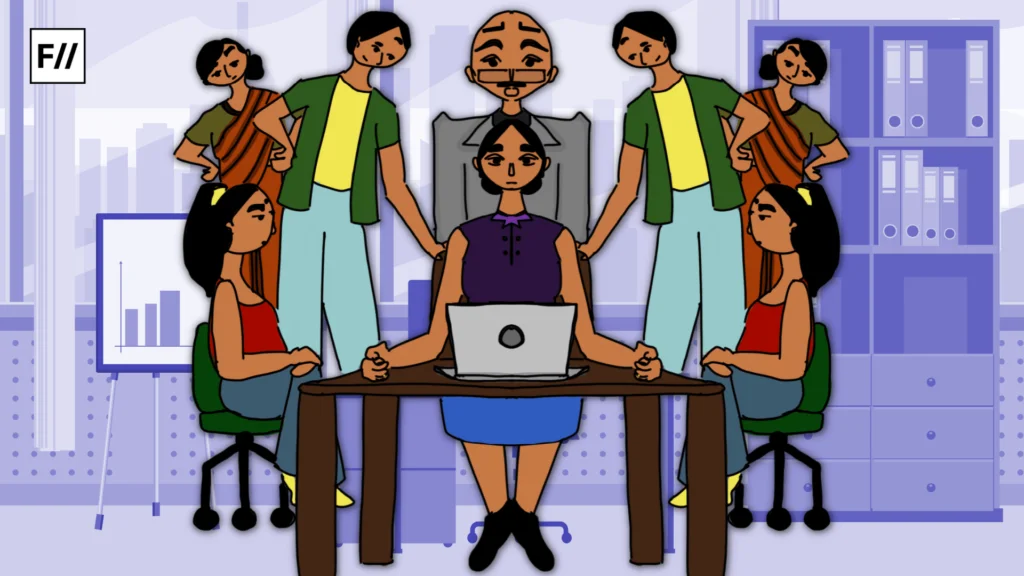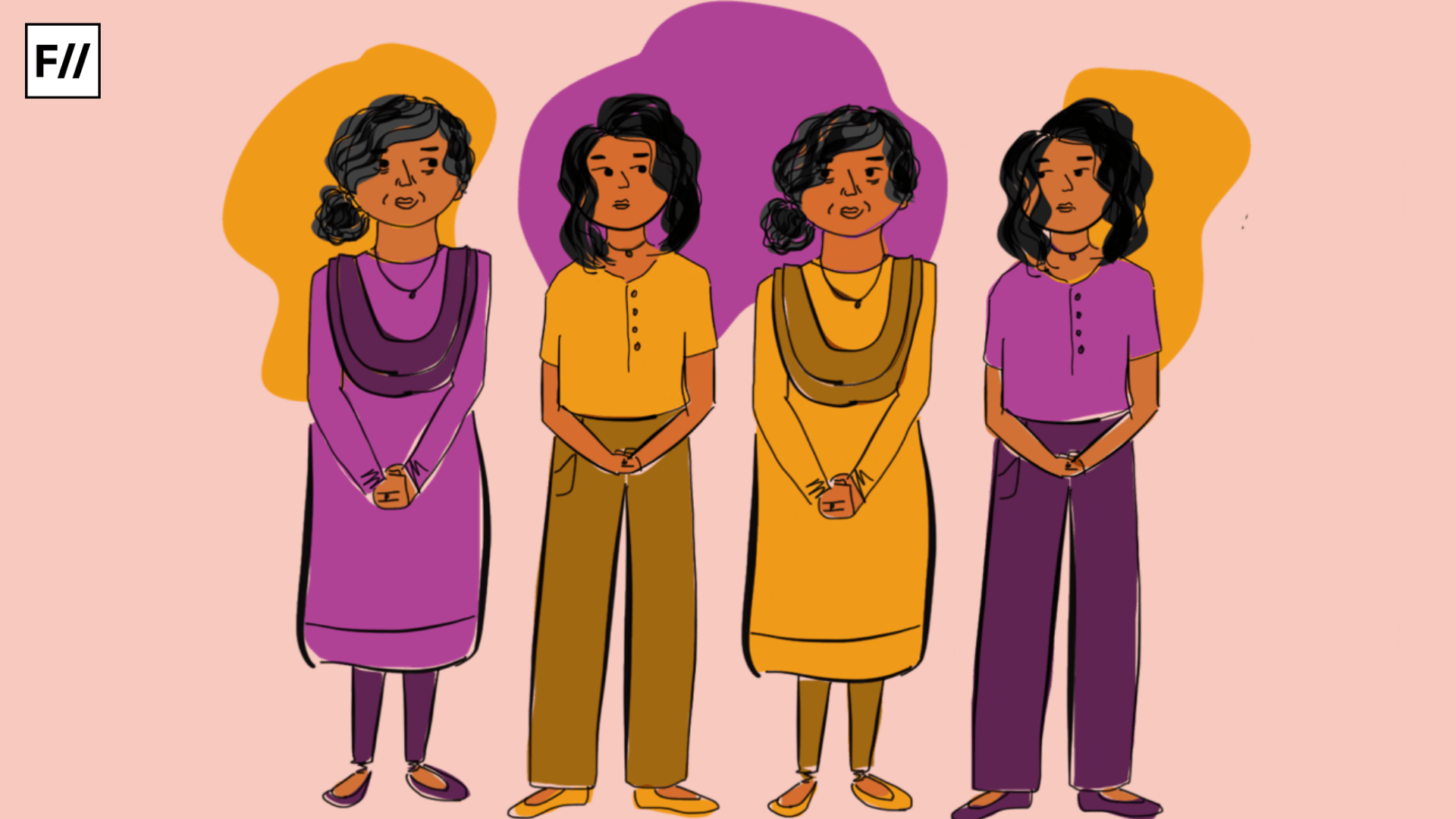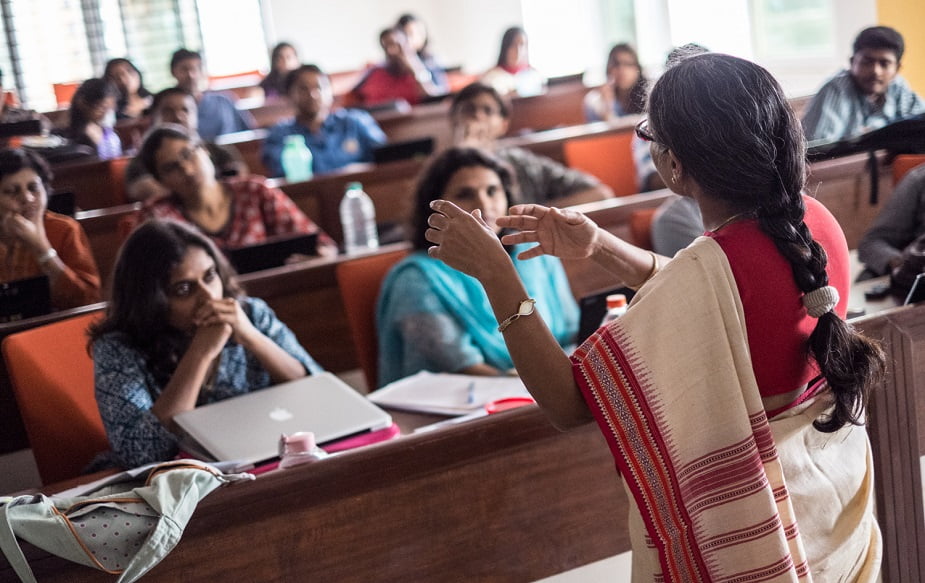A few days back, the Indian Institute of Management Rohtak released the first merit list for their Post Graduate Program in Management 2024-26. The list consisted of a total of 453 students in the General Category. However, what made IIM Rohtak trend on different social media platforms, especially, LinkedIn and Instagram was the fact that ‘434 Female and 19 Male candidates were offered admission in the General Category in the first merit list’.
However, what made IIM Rohtak trend on different social media platforms, especially, LinkedIn and Instagram was the fact that ‘434 Female and 19 Male candidates were offered admission in the General Category in the first merit list’.
Many arguments were made, especially on LinkedIn on the greater number of female candidates being offered admission at IIM Rohtak. A person posted that the institute should become ‘Girl’s IIM College’ or ‘Balika Vidyapeeth for B-Schools’ where male candidates would get points for diversity, while according to one person, the institute intends to waste the time and efforts of thousands of male aspirants under the name of diversity. Many people think merit has taken a backseat to blatant gender bias in this particular admission process.
Several people who are studying in top B-schools refer to the times when the male-female ratio in the top B-schools in India would be 9:1, and today for IIM Rohtak, it is 1:23. There are also people who think that it is ‘a strategy to lure frustrated, lonely and talented male engineers from top engineering colleges like IIT to leave IIMA, B, C (Ahmedabad, Bangalore and Calcutta) and join IIM Rohtak.’
What does “diversity” stand for in IIMs?
The IIM Act, 2017 and the Central Education Institutions (Reservation in Admission) Act, 2006 legally mandate the institutes to provide opportunities to students irrespective of their gender, physical ability, caste or economic status. Following the basic principles of reservation, a part of the Constitution of India, students from certain backgrounds bringing gender and academic diversity (non-engineering backgrounds, specifically) are awarded an extra score.
Following the basic principles of reservation, a part of the Constitution of India, students from certain backgrounds bringing gender and academic diversity (non-engineering backgrounds, specifically) are awarded an extra score.
For this article, the author looked at the Post Graduate Program in Management student profiles for the top 3 IIMs in India (as per the National Institute Ranking Framework 2023: Management) – Ahmedabad, Bangalore and Kozhikode. The Class of 2024 for the topmost IIM i.e. IIM Ahmedabad consists of 147 students out of which 32 are women, which amounts to almost 22%. The Class of 2025 for IIM Bangalore which takes the second position consists of 532 students out of which 173 are women, which amounts to almost 32%. Lastly, the Class of 2025 for IIM Kozhikode which takes the third position, consists of 486 students out of which 207 are women, which amounts to almost 43%.
The weightage given to gender and academic diversity differs from one IIM campus to the other. Last year in November, IIM Kozhikode revised its admission policy giving a score of 10 for gender diversity and a score of 5 for academic diversity. The revised policy would be effective from this year, however, the higher percentage of women in the last batch also reflects the intent of IIM Kozhikode on the lines of diversity, equity and inclusion.
Breaking it down: women in higher education
The All-India Survey on Higher Education 2021-22 reports the highest representation of female students in higher education, constituting 48% of the total overall enrolment. The representation of women in Arts and Humanities, Science, Commerce, and Education, decreases respectively. And, it is crucial to mention that the representation of women in engineering, management, and other technical courses remains poor, amounting to 29% against dominated by 71% of men.
There are different layers to the increase in the number of women in higher education– disciplinary choices; mode of education like regular, distance or online; quality of education; and development of industry-standard skills. The author was part of a research project looking at the pathways to higher education for young women in India at different geographical locations. It made the reality of education clear, especially regarding its inaccessibility for women from a low caste, having low economic status and minority communities, staying in rural areas, semi-urban areas and urban areas. It is not a linear process and is highly regulated by the background a woman comes from. The more marginalised one’s background, the higher the chances of dropping out of education.
The more marginalised one’s background, the higher the chances of dropping out of education.
The average fee for a two-year Post Graduate Programme in Management in top Business Schools is around Rs. 22 lakhs. India is one of the largest economies in India, however, income inequality has skyrocketed in the country in the last three decades. As per Oxfam International, the top 1% of the Indian population holds 77% of the total national wealth. Paylab, an operating website that collects data on salaries reports – for a person between 25 and 34 years of age, the average salary is around Rs. 11,000. There are different factors on which the salary of a person depends, here age is being used as one of the defining factors. Thus, for an average Indian, a large number of B-schools remain inaccessible irrespective of their gender and caste.
It is important to look at the high fees of B-schools from a different lens as well. After the Dowry Prohibition Act 1961 came into effect, dowry took the name of ‘gifts’. Irrespective of class, religion or caste background, a large number of Indian families spend a large sum of money on the wedding of their daughters, often going ahead of their limits. In these circumstances, spending money on a young woman’s education stands last on the priority list for two reasons. First, if one looks at the dynamics in affluent families, spending on a daughter’s marriage is symbolic of the dignity and honour of the family, and the money spent on her education could be used for and by the sons in the family. Second, the woman has to leave the parent’s house post-marriage so the return on investment would only be availed either by herself and her partner, or her in-laws.
Thus, there are very few women from middle, upper-middle and upper class families who make it to the B-schools, and supposedly, none from the lower class. In the hierarchy, the women who make it to B-schools take the topmost spot when the positions of women from different backgrounds are analysed, and yet it is pinching the highly educated top notch professionals in the corporate world that a large number of women have made it to IIM Rohtak.
Women in the workforce
The India Employment Report 2024 states that the female labour force participation in India in 2023 was 37% while for the male population, it stood at 78%. The WEF Report 2022 says that at the current rate of progress, it will take 132 years for the world’s labour force to reach full gender parity.
Even after making a large number of efforts – negotiating with family and community; working hard to catch up with fellow students and crossing one structural barrier after the other, education does not translate into a job opportunity for many women. Due to women’s care work and household responsibilities, they are considered incapable of managing their professional commitments at various times.
In addition, if women make it to the workspaces, there are numerous incidents of harsh working conditions, sexual harassment at work, and being forced to do a large sum of work. The Oxfam India Discrimination Report 2022 revealed the pay disparity between men and women. Men are paid higher amounts when compared to women holding the same position and catering to the same responsibilities.
This gets worse when one looks at women in leadership positions. According to the data released by LinkedIn in 2023, in leadership roles, like Director, CEO, Vice President, etc, there are only two women in ten men holding the same position. Additionally, the Women Leadership in Corporate India 2024 Report by KPMG, one of the top 4 consulting firms in India stated that 53% of organisations in India have just 10-30% women in leadership roles, while 9% of organisations do not have any women holding leadership positions.
Clearly, the professional world is lagging behind in many aspects – from understanding and respecting diversity to providing equal opportunities and pay to all.
Clearly, the professional world is lagging behind in many aspects – from understanding and respecting diversity to providing equal opportunities and pay to all. Savitri Bai and Jyotiba Phule promoted women’s rights to education in the 1880s and it must have been thought that by the 2000s, India would be a place where the basic concerns around a person’s rights would have been fought through and eradicated from the society. Sadly, we are still struggling for the same.
Affirmative action: the case of IIM Rohtak
The biggest concern around posts on IIM Rohtak giving almost 95% of seats to women candidates is that a large number of men from top B-schools in India made derogatory and sexist remarks about this. There is a high possibility that these people would acquire top positions in leading firms in India, earning large sums of money. They would most likely exercise power both in personal and professional spaces. The women employees working with them will perhaps be subjected to vicious sexism in the workplace.

For any community or group of people, affirmative action is exercised by taking into account the oppression, marginalisation and exploitation faced by them. If an institute adopts the same principle, why is it considered wrong? Do we question when female participation is low in educational institutions? Do we question when women get paid less?
This is certainly a push towards asking the right questions and not turning a blind eye to the reality of this world.









Stupid post.
If women are so good why doesn’t this replicate elsewhere as well?
The problem is not that 95% women are in IIM Rohtak but the problem is that this statistic is not replicated in CAT, neither in Boards Exam nor anywhere, not even in any other IIM selection which is a clear indication of bias involved.
The responsibility of government is to educate both genders.
All your crap is a bullshit trying to gain sympathy for women. These people who are saying all these will harass women in workspace? How in the world can someone come to this point? Did any of these say anything regarding women?
They said it with respect to the selection criteria of IIM Rohtak which they didn’t find right.
Did anyone say anything against women? No!
All the sexiest remarks were aimed at IIM Rohtak and not women. Don’t twist things as per your advantage.
Please don’t write any article supporting a cause because it supports you. Be unbiased!
I think what the author is trying to say is that no one bats an eye when it’s a male dominated institute but this one time, when women are in majority people have so many objections. I don’t think the author is trying to say that these men will harass the women at workplaces but that there would be subtle sexist attitudes which women in the corporate world would have to face. I hope the clarifies things up. You’re most likely a CAT aspirant, you should focus on increasing your VARC skills :”)
I don’t see how “vicious” means “subtle”, instead it departs from the meaning of subtle.
Plus where did I mention that the harrasment is going to be subtle or not, I just said that the author means girls will be harassed. I didn’t say anything about it being subtle or not.
Your first statement is as dumb as it can get. I have explained why it shows biased is involved still you are on the same page. You didn’t answer my reasoning of why bias is involved.
If you were preparing for CAT I would advice you to work on both things VARC and logic, or instead try better something else!
Thank you for sharing. The discussion on bias in B-schools, particularly the IIM Rohtak episode, raises important questions about gender inclusivity in education. For students in Greater Noida, considering institutions like the Top Engineering college and Top B.Tech College that prioritize diversity and inclusivity ensures a supportive learning environment. Similarly, exploring options like the Best MBA College with transparent course fees promotes fairness and equal opportunities in education.